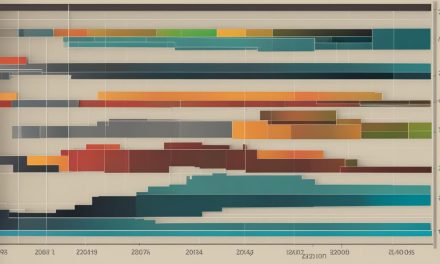What if your clients could feel as understood by you as they do by Netflix? The answer might determine whether your independent career thrives—or barely survives.
Today, 80% of people say the quality of their experience with a brand matters as much as the product itself. Platforms like Netflix and Hulu have reshaped expectations: clients now want interactions that anticipate their needs, not just react to them. For independent professionals, this shift isn’t a challenge—it’s an opportunity to build deeper, more profitable relationships.
Think about it: large companies spend millions on data-driven personalization. But as a solopreneur, you can create equally meaningful connections through strategic focus. It starts with understanding your audience at a granular level. For instance, research shows 68% of consumers expect tailored experiences, yet many independents overlook this advantage.
Your success hinges on transforming every interaction into a chance to demonstrate value. This isn’t about transactions—it’s about crafting a journey where clients feel supported, heard, and prioritized. Ready to turn fleeting projects into lasting partnerships? Let’s begin.
Table of Contents
Key Takeaways
- 80% of clients view service quality as equally important to products
- Personalized experiences drive loyalty in competitive markets
- Independent professionals can outperform corporations through targeted relationship-building
- Data-informed strategies increase revenue potential by up to 760%
- Consistent value delivery establishes expertise and trust
Understanding the Evolving Landscape of Customer Engagement
Four out of five consumers now compare every professional interaction to their best digital experience. This seismic shift means consistency and anticipation aren’t optional—they’re the baseline for building trust. When 79% expect seamless transitions between communication channels, independents must rethink how they deliver value.
Exploring the Shift in Expectations
Tech giants have rewritten the rules. Clients no longer separate « work relationships » from other interactions—they want the same intuitive service they get from streaming platforms or food delivery apps. A recent study found 80% believe companies underutilize collected information to improve experiences.
This creates a paradox: more access to insights than ever, yet higher demands for personalization. For independents, it means every email, proposal, or consultation must demonstrate deep understanding of individual needs.
How Data and Technology Shape Experiences
Analytics tools now put clients in the driver’s seat. They arrive informed about industry standards, pricing models, and alternatives. Your advantage? Combining this transparency with human-centric solutions large corporations often lack.
Social platforms amplify voices exponentially. One viral testimonial can attract ideal clients—or expose missteps. By leveraging data patterns to predict pain points before they arise, you create advocates who champion your services organically.
Best Practices for a Successful Customer Engagement Strategy
What separates thriving independents from competitors? A focus on client journeys that prioritize mutual growth over quick wins. Research reveals businesses adopting relationship-first practices see 23% higher profitability than those stuck in transactional patterns.
Developing a Client-Centric Mindset
Shift from « what can I sell? » to « how can I solve? » This mindset transforms one-off projects into recurring collaborations. For example, a freelance marketing consultant might analyze a client’s quarterly goals before proposing tactics—aligning efforts with broader business objectives.
Consider these proven outcomes:
| Approach | Client Retention | Revenue Impact |
|---|---|---|
| Transactional | 37% renewal rate | +12% short-term |
| Relationship-focused | 63% repeat business | +55% long-term |
Implement three core principles:
- Conduct discovery calls that uncover unspoken needs
- Share relevant industry insights between projects
- Structure payments around milestones tied to client outcomes
This strategy reduces client acquisition costs by 31% according to LinkedIn’s 2023 independent workforce report. By embedding value at every stage, you create partnerships where success becomes cyclical—not conditional.
Crafting Personalized Customer Experiences
Personalization isn’t a perk—it’s the price of entry. With 65% of clients expecting continuous adaptation to their evolving needs, generic approaches now risk relationships. The challenge? 61% feel service providers treat them as data points rather than partners.
Tailoring Content for Diverse Journeys
Every interaction—from initial consultation to post-project support—shapes perceptions. Successful independents map touchpoints to deliver context-specific value. For example:
- Adjust proposal language to match decision-makers’ priorities
- Share industry-specific case studies during onboarding
- Provide progress updates in preferred formats (video/text/audio)
This systematic approach turns standard workflows into relationship accelerators. Clients notice when you remember their team structure or fiscal year cycles.
The Role of Customization and Personalization
While often used interchangeably, these concepts differ:
| Customization | Personalization |
|---|---|
| Client-driven adjustments | Anticipatory service design |
| « Choose your package » options | Pre-emptively addressing pain points |
Technology enables both—73% expect smarter adaptations as tools evolve. But true differentiation comes from blending data insights with human intuition. Track preferences through simple surveys or project retrospectives to refine your approach systematically.
Leveraging Technology to Enhance Interactions

Modern professionals thrive by merging human expertise with smart tools. While corporations drown in disconnected apps, independents can build streamlined tech ecosystems that drive meaningful connections.
Integrating CRM Systems and Analytics
Centralized platforms transform how you manage relationships. A unified CRM becomes your command center, tracking:
- Project histories and preferences
- Communication patterns across channels
- Outcomes tied to specific strategies
Analytics tools reveal hidden opportunities. One consultant increased repeat business by 40% after spotting a 3-week window when clients most needed support.
Maximizing Multi-channel Engagement
64% of professionals juggle 4+ devices daily. Your toolkit must adapt:
- Sync project management platforms with video conferencing
- Connect client portals to email automation
- Align scheduling tools with payment systems
This integration prevents data silos while delivering consistent experiences. As one developer noted: « Clients remember when you meet them where they work best—not where your systems force them to be. »
Prioritize tools that grow with your practice. The right stack becomes an invisible partner, amplifying your strengths while protecting time for high-value interactions.
Implementing a Customer Engagement Strategy
The true test of any strategy lies in its execution—especially when building professional relationships that last. Start by analyzing existing collaborations to spot patterns in successful partnerships. What makes certain projects evolve into long-term alliances? Often, it’s systematic attention to three core elements: preparation, adaptation, and measurable outcomes.
Actionable Methods for Rapid Results
Develop detailed profiles of your ideal collaborators, including their industry focus and communication preferences. This foundation enables tailored interactions from the first contact. For instance, a Paris-based web designer might discover architectural firms prefer visual progress updates via Loom videos rather than written reports.
Establish clear processes for every phase:
- Onboarding checklists aligning expectations
- Automated milestone reminders with personalized notes
- Post-project retrospectives identifying improvement areas
Build adaptable content libraries—email templates, case studies, and pricing guides—that maintain brand voice while addressing specific needs. One independent consultant increased referral rates by 33% after creating industry-specific proposal packages.
Implement real-time feedback loops using brief surveys after key deliverables. This approach allows immediate adjustments rather than waiting until project completion. As one freelancer noted: « Catching minor concerns early transformed my client satisfaction scores from good to exceptional. »
Finally, create accountability systems tracking interaction frequency and outcomes. Simple spreadsheets or CRM dashboards help identify which activities drive renewals versus those needing refinement. Consistent measurement turns abstract strategies into repeatable success formulas.
Measuring Success: Metrics and Data-Driven Insights

69% of service teams now prioritize first-contact resolution rates—a statistic revealing how professionals measure what truly matters. For independents, success isn’t just about deliverables; it’s about creating measurable value that strengthens partnerships over time.
Key Performance Indicators in Experience Design
Effective measurement starts with aligning metrics to your unique goals. Client lifetime value and proactive resolution rates often matter more than generic benchmarks. For example:
- Response time metrics show operational efficiency
- Project satisfaction scores reveal perceived quality
- Case deflection rates highlight preventive strategies
One graphic designer increased renewals by 28% after tracking how often clients expanded project scopes—a clear indicator of trust.
Tracking Satisfaction and Partnership Longevity
Retention thrives when you monitor both numbers and narratives. Quantitative data like contract renewals tells one story. Qualitative feedback about communication styles or problem-solving agility completes the picture.
Consider this approach:
- Quarterly check-ins assessing value perception
- Automated surveys after key milestones
- Referral rate analysis tied to service adjustments
As one Paris-based consultant noted: « Tracking client fiscal cycles helped me anticipate needs—turning 63% of annual contracts into multi-year agreements. »
Regularly cross-reference metrics with direct feedback. This dual perspective uncovers hidden opportunities while maintaining the human touch that defines independent success.
Real-World Examples and Case Studies
Global brands and media platforms offer blueprints for independents seeking to elevate their practice. By studying their strategies, you gain actionable lessons without corporate-sized budgets.
Lessons from Leading Brands and Media Platforms
Spotify’s « Made for MacKenzie » playlists demonstrate how media platforms turn data into emotional connections. By analyzing listening habits, they create hyper-relevant experiences that feel handcrafted—not algorithmic.
Uber Eats takes this further. Their notifications blend behavioral insights with personal touches:
- Addressing users by first name
- Highlighting favorite restaurants
- Timing offers around habitual order periods
Whole Foods’ recipe chatbot shows how innovation scales personalization. Users receive meal ideas based on purchase history—even emoji-based requests. This balances automation with individualized attention.
How Independent Professionals Can Innovate
Adapt these examples to your practice:
- Tag client documents with personalized headers
- Schedule check-ins around industry events
- Use CRM notes to reference past conversations
A Paris-based copywriter increased referrals by 41% after sending clients curated reading lists matching their content calendars. Like brands, they transformed generic service into tailored value.
The key? Start small. Track one client preference category—communication style or project milestones—and build from there. As Spotify proves, micro-adjustments create macro impact.
Conclusion
In today’s competitive landscape, fostering genuine connections isn’t optional—it’s the cornerstone of professional success. While client engagement strategies evolve, the core principle remains unchanged: relationships built on consistent value outperform transactional interactions every time.
Loyalty grows when you anticipate needs before they’re voiced. Tools like CRM systems help maintain these connections post-project, turning single collaborations into lasting partnerships. Businesses thrive when professionals prioritize trust over quick wins—61% of clients report higher satisfaction with proactive service providers.
The future belongs to independents who blend human insight with smart workflows. By focusing on mutual growth and proactive communication, you create advocates who fuel sustainable success. Remember, every interaction reinforces your reliability as a seasoned professional.
Growth stems from systematic relationship-building. Track metrics like repeat business and referral rates—these indicators reveal where strategies excel. Platforms streamlining connections while preserving personal touches become loyalty accelerators.
As expectations shift, adaptability defines business resilience. Build bridges through consistent value delivery, and watch your independent career flourish in France’s dynamic market. The path forward? Transform satisfied clients into lifelong partners.
FAQ
How can independent professionals adapt to changing client expectations?
Stay proactive by regularly gathering feedback through surveys or platforms like Typeform. Analyze trends using tools like Google Analytics to anticipate needs. Flexibility and transparency in communication build trust as priorities evolve.
What tools help personalize experiences without large budgets?
Platforms like HubSpot CRM offer affordable automation for tailored email campaigns. Canva’s templates enable quick customization of visual content. Even simple segmentation in Mailchimp can boost relevance for niche audiences.
How do I balance automation with authentic human interaction?
Use tools like Calendly for scheduling but add personalized video intros via Loom. Platforms such as Slack allow automated reminders while maintaining real-time collaboration. Always leave room for one-on-one check-ins to deepen relationships.
Which metrics matter most for measuring engagement success?
Focus on repeat interaction rates, client retention (tracked via Pipedrive), and Net Promoter Score®. Platforms like Hotjar reveal user behavior patterns, while satisfaction surveys on SurveyMonkey provide direct insights.
What can solo entrepreneurs learn from brands like Airbnb or Glossier?
These companies excel in community-building—mirror this by creating LinkedIn groups or Substack newsletters. Use storytelling frameworks similar to Apple’s product launches to make your services memorable and relatable.
What’s one quick-win strategy to improve client interactions?
Implement a structured onboarding process using Notion templates. Clarify goals, timelines, and communication channels upfront. This reduces friction and sets clear expectations, fostering long-term collaboration.





